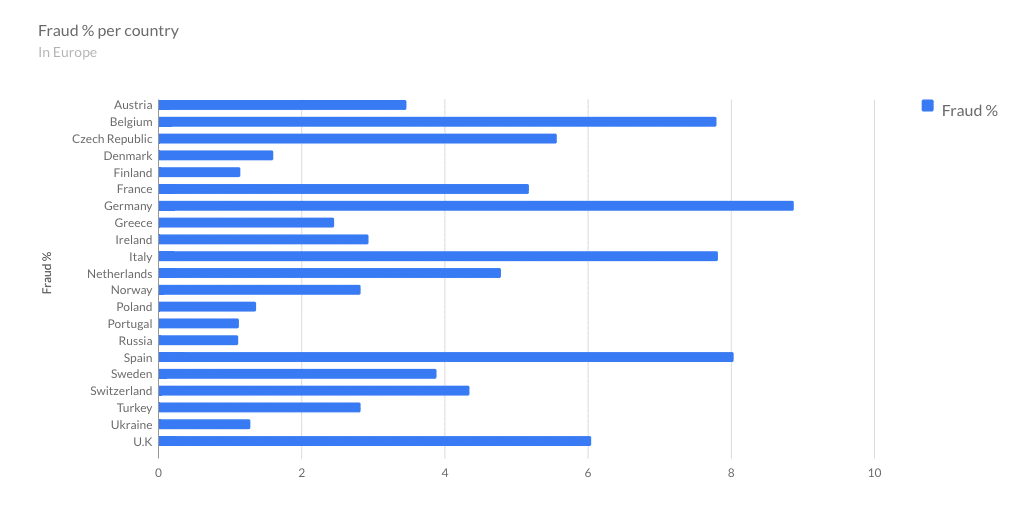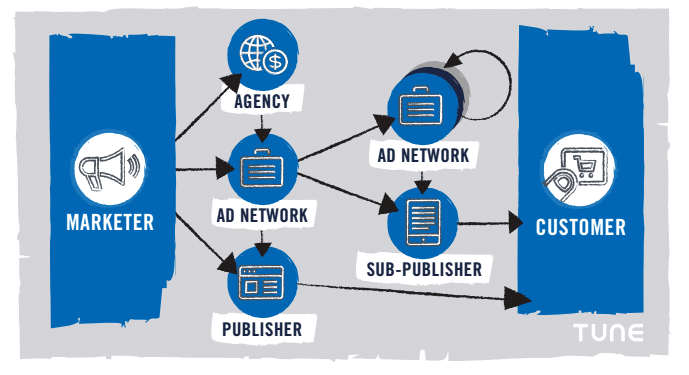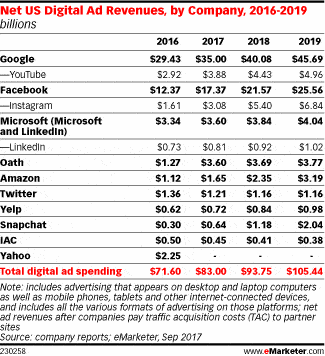This article was originally published on the TUNE blog. Branch acquired the TUNE Attribution Analytics product in September 2018, and we have republished select pieces of content for the enjoyment of Branch customers. This post was written by John Koetsier, formerly of TUNE.
The promise of blockchain is extreme in almost every facet of technology. Having a common record book that everyone can see, and no one individual can alter, is a simple but stunning idea that could revolutionize advertising through more trustworthiness, lower costs, better transparency, and a renegotiated contract with consumers.
But not all blockchains are equal.
And some problems are harder to solve than others.
There are four major problems in advertising right now: fraud, privacy, complexity, and supply consolidation. Blockchain has the potential to address several of them, but probably not all. Before we address how blockchain can or can’t help, let’s summarize the core issues.
Fraud
The first is on the industry side, and it’s a problem between brands, who pay for advertising, adtech companies, who facilitate placement and optimization of advertising, and publishers, who exist (in most cases) thanks to advertising.
I’m talking, of course, about fraud, which lives in the nooks and crannies of our publishing ecosystem and flourishes in the dark. It’s costing brands as much as $16.4 billion this year.

If we’re going to create advertising 2.0 using blockchain, fraud is something we need to add to the equation. We cannot ignore it; it is probably the biggest single problem facing marketers and brands today.
Privacy
Privacy is not conveniently going away, as some in the adtech world might wish.
In a major section of the world, GDPR is getting closer to being fully enforced, and violators could be forced to pay up to 4% of their annual global income in fines. In the U.S. and elsewhere, privacy regulation may be less stringent, but people feel pretty much the same way.

There’s concern about privacy, and there’s even paranoia.
For example, TUNE research indicates that a fifth of smartphone owners believe that mobile advertisers collect “everything” about them, including keystrokes on their device as they’re tapping out messages. For some, that includes sexual preferences, even porn habits. For others, it’s credit card information, physical addresses, phone calls they take, and emails that they’ve written.
Clearly, there’s some misinformation.
But in an environment where every week brings new news of massive security breaches — Yahoo … Equifax … Deep Root Analytics — and private data thefts, people are increasingly concerned about what adtech companies do with their data.
Complexity
Digital advertising is a crazy alternate universe, full of acronyms like DSP, SSP, DMP, eCPM, RTB, DNT, and ad exchanges, networks, servers, mediation players plus much more. Modern marketers have to learn a whole new language to navigate this bizarro land, but that’s not the worst part.

HOW ADS GET FROM MARKETERS TO POTENTIAL CUSTOMERS
The worst part is that the complexity of the ecosystem lends itself to dark corners and hidden transactions which enable fraud … even defrauding those companies who are theoretically using ad verification services and have proclaimed that they will no longer pay for fraudulent impressions, views, and clicks.
Reducing complexity can reduce the space in which fraud can flourish. It can also make it simpler for advertisers to understand what they are buying, where it is appearing, and who is seeing it.
Supply consolidation
In 2016, Google parent company Alphabet took in $80 billion in global ad revenue, while Facebook collected $27 billion. Comcast was a fraction at $13 billion, Disney was under $9 billion, while Viacom, Time Warner, Hearst, and News Corp were all under $5 billion.
That supply consolidation is getting even stronger in 2017, reaching a combined 63.1% of U.S digital ad spend.

US DIGITAL AD SPEND, ACCORDING TO EMARKETER
Consolidation tends to lead to pricing power, which can have obvious negative impact on brands and advertisers. It can also limit choice.
How can blockchain fix adtech’s problems?
I think we can all agree there’s no point implementing a solution unless it … actually solves problems. So what can blockchain do to solve the four problems of fraud, privacy, complexity, and supply consolidation?
How blockchain actually works
Public blockchains are open source distributed record systems:
- Anyone can participate without asking anyone else, simply by downloading the code and starting a local node on their systems.
- Blockchains record transactions publicly, but this does not necessarily destroy anonymity.
- Everyone with a node on the system holds a complete record of all transactions (blocks), all connected or linked (chain).
- Blockchains are append-only … which typically means that transactions are irreversible.
The result is that blockchain enables the transaction of business between parties who do not need to trust each other and do not require an intermediary or trusted third party to supervise the agreement.
It’s worth noting that truth in blockchain is typically consensus-derived based on a foundational set of rules, but if a majority of nodes on the system decide to add additional rules, they can under certain circumstances.
Fraud and blockchain
Transparency can be a significant guard against fraud.
So smart contracts enacted via a blockchain-based system could potentially be open and public, enabling independent verification. It may very well be that big advertisers and big media companies might not like to have their spend and income data publicized, but there are ways to ensure confidentiality even in decentralized systems. And there are also private or federated blockchains, perhaps more accurately termed private ledger technologies, that have some value.
The challenge is that the contract in ad fraud is not really the core source of the problem. Few contracts for explicitly fraudulent supply get signed.
Rather, the problem exists in the delivery of what ad networks promise to advertisers: the delivery of messages to real people in ethical ways via approved media to generate real business results such as views, clicks, installs, purchases, or other activity. Fraud exists when ad networks supply fake users to mobile app publishers, show ads to bots instead of real people, publish ads to strategically-selected cheaper audience targets, or falsely claim credit for what marketers’ own efforts or other ad networks have achieved.
Solving those problems are much harder challenges.
While blockchain technology can theoretically help solve some of these issues by allowing advertisers to track all the buying, selling, and re-brokering of their ads — including which creatives are being used, and where ads are being displayed — this would require sub-publishers agreeing to track and manage their activity via a smart contract. And you would need to add external verification of activity, plus API-enable execution of your smart contracts based on that verification via technology like ChainLink. Doing this on a per-ad impression or click right now is a non-starter thanks to performance issues … and writing summaries of activity captured by other systems to the blockchain is hardly an improvement on current processes.
These problems are also very closely related to privacy.
Privacy and blockchain
Blockchain is an open protocol. But you could envision circumstances under which it could be used to enhance consumer privacy.
So theoretically, a sort of distributed uber Do Not Track system (let’s call it uDNT) could provide grouping and classification of groups of anonymous individuals by various factors such as interests, demographics, and income. People could access what groupings they belong in and alter them, including instructions about what kind of advertising they’d accept or not accept. Publishers and adtech vendors could pledge to adopt uDNT as their sole audience characterization and targeting mechanisms, and people could decide to only visit/download/use those media which participate.
(Interestingly, such a system would be GDPR-compliant.)
Why would consumers do this?
Potentially, freedom from the hundreds of tracking and demographic data companies that are currently sucking whatever information they can from online, mobile, and social activity. A system like this would also have the capability to eliminate fraud, which is good from the ad network and advertiser side.
But a blockchain that monitors and measures every single ad view, click, and conversion is probably not a great fit.
Blockchain is too slow to manage the millions-per-second transaction speed that would be required … it currently handles only a few transactions per second, and the size of the blockchain grows with every transaction. Since every node on a blockchain needs to have a complete copy of the distributed database, that can cause problems over time. There are solutions which aim to improve blockchain processing speed, like Hashgraph, but while multiple orders of magnitude faster, it’s still not enough. Other potential solutions such as multilayer blockchains — running 100,000 independent blockchains concurrently — are still in testing and pre-launch phases.
Or, of course, you can set up super-nodes — validators on private or permissioned blockchains — which are the source of truth. This is, in some sense, not a real blockchain solution, and it sets up mandatory power and trust relationships that blockchain was invented to destroy.
As The Who said: Meet the new boss … same as the old boss.
And on size: Bitcoin’s blockchain was 20 gigabytes in August 2014.
Today it’s almost 140GB.
So while there are definitely some places where blockchain can help, including in permissioning and in creating a creative economy, such as Brave’s basic attention token and Stream, it’s not clear that blockchain can solve all the problems here. And doing so requires massive adoption.
Complexity and blockchain
There’s potential for blockchain to simplify what’s happening in adtech so that marketers can connect directly with publishers, without the host of middlemen that currently exist. For example, smart contracts executed on an adtech blockchain could be triggered via external data feeds, using technology like the ChainLink.
Ads get served; verification happens; value exchange happens.
But that also means there’s huge potential to save money. Brands are paying easily 42 to 60 cents of each dollar of ad spend to media agencies, trading desks, demand side platforms, and other adtech middlemen. This doesn’t happen in every case — many buys are direct to publisher — but it does happen frequently.
Blockchain is one way (but not the only way) of eliminating the cost and complexity.
What we don’t need blockchain to do
We don’t need blockchain to re-create closed and limited systems. We have those already, thank you very much.
We don’t need blockchain opt-in by advertisers to require opening up their systems, investments, and communities of customers to their competitors. That’s a non-starter.
We don’t need a blockchain that replaces one set of ad-supply masters with a new set of blockchain owners with an unbalanced level of power in the ecosystem. The adtech industry has enough players who want to own it all already.
We don’t need a blockchain that transforms ads into an asset class. We need a creative economy, sure, but we also could use a blockchain that recognizes attention as an asset, and rewards it accordingly.
What we do need blockchain for
If we want to create advertising 2.0, an ecosystem that fully respects people as individuals and values their data as private, there is an opportunity to re-invent what we are currently doing, take out the fraud, and vastly improve the consumer experience of advertising, blockchain offers us an opportunity to do so.
But it will require a significant consortium of industry players in the supply and demand sides to work.
That’s a future we’re willing to work towards.






















